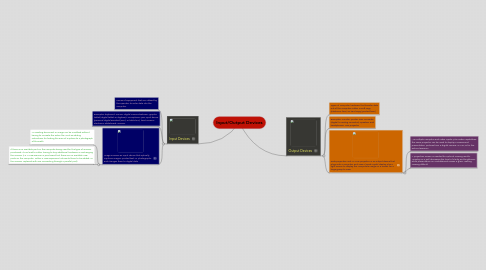
1. Input Devices
1.1. Pieces of equipment that are utilized by the operator to enter data into the computer
1.2. Examples: keyboard, mouse, digital camera/webcam, graphic tablet (digital tablet or digitizer), microphone, pen input device (personal digital assistant (PDA) or tablet PC), touch screen, electronic whiteboard, scanner
1.3. Image Scanner-an input device that optically captures images, printed text, or photographs and changes them to digital data
1.3.1. An existing document or image can be modified without having to recreate the entire file, such as adding instructions for finding the area of a sphere to a photograph of the Earth
1.3.2. If there is no available port on the computer being used for the type of scanner purchased, it can lead to either having to buy additional hardware or exchanging the scanner (i.e. a USB scanner is purchased, but there are no available USB ports on the computer. Either a USB expansion hub would have to be added, or the scanner replaced with one connecting through a parallel port)
2. Output Devices
2.1. Types of computer hardware that transfer data out of the computer, either in soft copy (electronic form) or hard copy (printed form)
2.2. Examples: monitor, printer, scan converter (digital to analog convertor), speakers and headphones, LCD projector
2.3. Data projection unit, or LCD projector, is an output device that plugs into a computer and uses a liquid-crystal display plus a light source to display the computer’s image on a screen for a large group to view
2.3.1. Via multiple computer and video inputs, plus audio capabilities, the same projector can be used to display a PowerPoint presentation, pictures from a digital camera, or a DVD for the entire classroom
2.3.2. A projection screen is needed for optimal viewing results. Display on a wall decreases the level of clarity and brightness, while presentation on a whiteboard causes a glare, making viewing difficult
